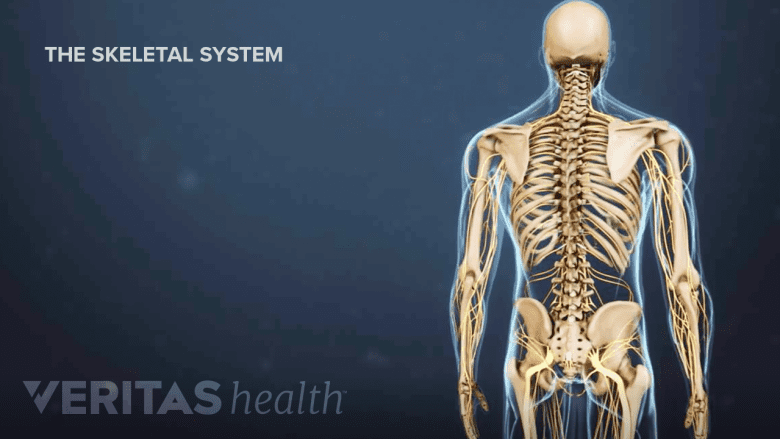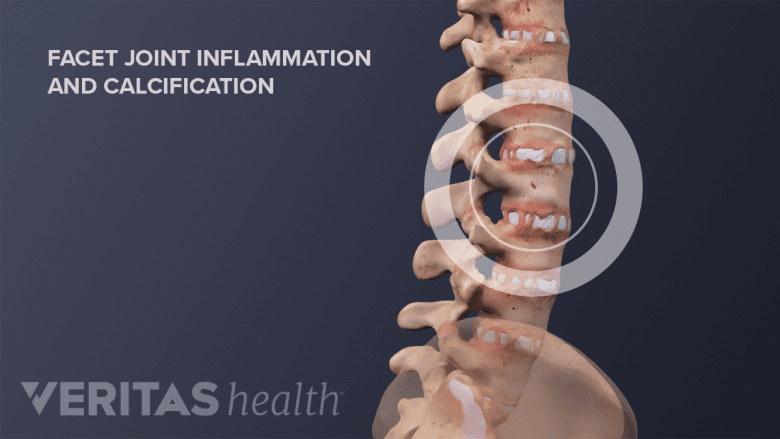Osteoporosis may be categorized based on its underlying causes. Primary osteoporosis is caused by natural age-related changes to bone density. Some cases of osteoporosis develop as the result of a separate condition or medication, called secondary osteoporosis.
A clinical diagnosis can distinguish whether the condition is primary or secondary. Because the treatments for primary and secondary osteoporosis differ, it is important to know if osteoporosis is age-related or caused by another underlying condition.
In This Article:
Primary Osteoporosis with Aging
Primary osteoporosis is caused by natural changes to bone mass and strength that come with age.
For most patients, osteoporosis is caused by natural changes to bone mass and strength that come with age. Primary osteoporosis is most notable in women who have gone through menopause, but can affect anyone in advanced age.
Age-related changes to bone mass and bone structure can affect both the spongy interior bone (called cancellous or trabecular bone), the hard exterior bone (called cortical bone), or both.
How Primary Osteoporosis Develops
As a person ages, the process of bone breaking down (resorption) becomes faster than bone can be rebuilt (bone formation). This imbalance leads to lower bone mass and loss of integrity of the bone structure, causing bones to become thinner, weaker, and more susceptible to fractures.
See Osteoporosis: The Primary Cause of Collapsed Vertebrae
In women going through menopause, estrogen is drastically decreased at a relatively rapid rate. With less estrogen, more bone is removed than is laid down. When bone thins due to suddenly lower estrogen levels, it is considered postmenopausal osteoporosis.
Secondary Osteoporosis
Autoimmune disorders, such as ankylosing spondylitis, can trigger secondary osteoporosis.
A separate health condition can affect the process of bone growth and diminish bone density, called secondary osteoporosis. In such cases, a health condition or medication directly or indirectly influences bone metabolism, leading to lower bone density and a risk for developing osteoporosis later in life.
Causes of Secondary Osteoporosis
Health conditions that may cause secondary osteoporosis can include1Mirza F, Canalis E. Secondary Osteoporosis: Pathophysiology and Management. Eur J Endocrinol. 2015; 173(3): R131-R151. https://www.ncbi.nlm.nih.gov/pmc/articles/PMC4534332/. Published September 2015. Accessed April 2019.:
- Endocrine disorders that affect the system of glands that control hormones in the body. Because hormones play an important role in bone growth, too much or too little hormone release can raise the risk of low bone density. Such disorders include diabetes, hyperthyroidism, hyperparathyroidism, Cushing’s disease, and hypogonadism (low testosterone in males).
- Malnutrition issues caused by gastrointestinal, hepatic, and nutritional disorders, in which the body does not absorb or receive enough nutrients for healthy bone growth. Some examples include celiac disease, irritable bowel syndrome, anorexia nervosa, and having had gastric bypass surgery. In particular, a lack of adequate vitamin D intake (vitamin D deficiency) is an important factor for developing secondary osteoporosis.
- Marrow disorders that affect the bone marrow in the center of bones, including but not limited to multiple myeloma, chronic alcohol use, and lymphoma.
- Collagen disorders that lead to too much or too little collagen in the body, such as osteogenesis imperfecta and Marfan syndrome.
- Autoimmune disorders in which decreased or atypical bone growth and/or vitamin D deficiency are common, including rheumatoid arthritis, ankylosing spondylitis, and multiple sclerosis.
- Renal disorders that alter how the kidneys process calcium, including chronic kidney disease and excess calcium in the urine (idiopathic hypercalciuria).
The long-term use of medications to treat these conditions can also increase the risk of developing osteoporosis1Mirza F, Canalis E. Secondary Osteoporosis: Pathophysiology and Management. Eur J Endocrinol. 2015; 173(3): R131-R151. https://www.ncbi.nlm.nih.gov/pmc/articles/PMC4534332/. Published September 2015. Accessed April 2019.:
- Glucocorticoids used for many endocrine disorders. Osteoporosis induced by glucocorticoid use is the most common cause of secondary osteoporosis.1Mirza F, Canalis E. Secondary Osteoporosis: Pathophysiology and Management. Eur J Endocrinol. 2015; 173(3): R131-R151. https://www.ncbi.nlm.nih.gov/pmc/articles/PMC4534332/. Published September 2015. Accessed April 2019.
- Excessive thyroid hormone replacements and suppression medications.
- Medications for the central nervous system, including antidepressants and anticonvulsants.
- Immune system medications, such as calcineurin inhibitors and antiretroviral therapy.
- Proton pump inhibitors, used to control gastrointestinal disorders.
It is important to discuss the potential benefits and risks of any medication with a doctor before use.
Rare Types of Osteoporosis
Two other types of osteoporosis occur far less commonly:
- Osteogenesis imperfecta, a group of genetic disorders present at birth that alter the development of collagen in bone, causing bones to break more easily. Effects of this condition range from relatively mild to severe and life-threatening. Other symptoms of mild types include a blue-ish tint in the eyes and early hearing loss.
- Idiopathic juvenile osteoporosis occurs in children during periods of growth, typically between ages 8 and 14.2Healthwise Staff. Types of Osteoporosis. University of Michigan Health.https://www.uofmhealth.org/health-library/hw45105. Updated May 2017. Accessed April 2019.
Specialized care throughout life is typically needed to manage osteoporosis diagnosed in children.
- 1 Mirza F, Canalis E. Secondary Osteoporosis: Pathophysiology and Management. Eur J Endocrinol. 2015; 173(3): R131-R151. https://www.ncbi.nlm.nih.gov/pmc/articles/PMC4534332/. Published September 2015. Accessed April 2019.
- 2 Healthwise Staff. Types of Osteoporosis. University of Michigan Health.https://www.uofmhealth.org/health-library/hw45105. Updated May 2017. Accessed April 2019.







